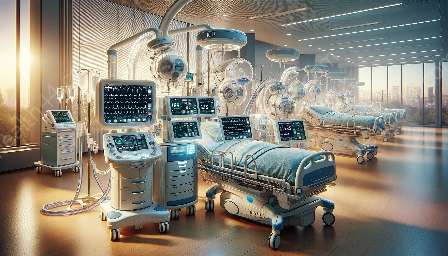Intra-aortic balloon pumps (IABPs) play a critical role in the realm of medical devices and life support systems, particularly in the context of cardiac care and intervention. Understanding the functions, benefits, and technological aspects of IABPs can provide valuable insights for healthcare professionals, patients, and the broader medical community.
The Significance of Intra-Aortic Balloon Pumps in Modern Healthcare
Introduction to Intra-Aortic Balloon Pumps (IABPs)
When considering life support systems and medical devices, the focus on cardiovascular intervention and support is paramount due to the prevalence of heart-related conditions and the impact they have on patient outcomes. In this context, IABPs are indispensable tools that provide mechanical circulatory support to assist cardiac function and improve coronary perfusion.
The Function of Intra-Aortic Balloon Pumps
IABPs work by augmenting coronary blood flow and reducing the workload of the heart during the cardiac cycle. This is achieved through timed inflation and deflation of the balloon, synchronized with the patient's cardiac rhythm. By inflating the balloon during diastole and deflating it just before systole, IABPs can enhance myocardial oxygen supply and decrease myocardial oxygen demand, thereby optimizing cardiac function.
Applications of Intra-Aortic Balloon Pumps: Clinical Scenarios and Patient Profiles
IABPs are commonly utilized in critical care settings, including but not limited to acute myocardial infarction, cardiogenic shock, acute decompensated heart failure, and high-risk coronary interventions. Their versatility and efficacy make them a vital component of life support systems, particularly in scenarios where traditional medical management alone may not suffice.
Interplay Between Intra-Aortic Balloon Pumps and Life Support Systems
Integration of IABPs in Comprehensive Cardiac Care
When discussing life support systems, the synergy between IABPs and other modalities of critical care cannot be overlooked. IABPs can be seamlessly integrated into the broader spectrum of mechanical circulatory support devices, extracorporeal membrane oxygenation (ECMO), and ventricular assist devices (VADs) to provide comprehensive support for patients with acute or chronic cardiac conditions.
Impact on Patient Outcomes and Quality of Life
Research and clinical evidence underscore the positive impact of IABPs on patient survival, hemodynamic stability, and overall recovery. By alleviating myocardial strain and bolstering coronary perfusion, IABPs contribute to improved outcomes, reduced complications, and enhanced quality of life for individuals facing acute cardiac challenges.
Technological Advancements and Innovations in Intra-Aortic Balloon Pumps
Evolution of IABP Technology
The landscape of medical devices and equipment is continually evolving, and IABPs are no exception. From traditional devices to advanced integrated systems with state-of-the-art monitoring and control features, the evolution of IABP technology reflects the commitment to enhancing patient care and optimizing clinical outcomes.
Future Directions in IABP Development
The intersection of medical devices and life support systems is poised for further advancements in the realm of IABPs. Opportunities for miniaturization, remote monitoring, and enhanced portability hold promise for expanding the accessibility and effectiveness of IABPs across diverse healthcare settings.
Conclusion
Embracing the Role of Intra-Aortic Balloon Pumps in Life Support Systems and Medical Devices
In conclusion, the integral role of IABPs within the domain of life support systems and medical devices cannot be overstated. By acknowledging their significance, understanding their functionality, and embracing technological advancements, healthcare professionals and stakeholders can propel the field of cardiac care forward, ultimately benefiting patients and communities worldwide.


